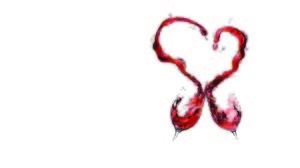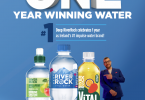Irish wine consumers among most well-informed globally

Irish wine shoppers fall into three distinct groups: those that only buy red (18% of shoppers), those that only buy white (21%) and those that buy a combination of both (42%).
A new report just out from Wine Intelligence entitled Ireland Wine Landscapes 2020 poses the question, “Why is it that Ireland boasts some of the most well-informed wine consumers in the world?”.
The report takes an in-depth look at the Irish wine market and the consumers within it, delving into beverage repertoire, varietal consumption and wine purchase behaviours alongside the hot topics of Prosecco and Rosé.
Logistically, Ireland works well, states Wine Intelligence. The economy has been on a positive trajectory since 2014 and recorded GDP growth of 5% in the past 12 months, according to the country’s Central Statistical Office.
More than half of Irish adults drink wine on a monthly basis, with Irish regular wine drinkers now earning significantly more than they did.
Perhaps this accounts for why regular wine drinkers here display a willingness to spend more on a bottle of wine in the off-trade.
And the local independent wine merchant’s share of the wine market grew last year to 24% of those buying wine in the past six months compared to 21% back in 2012. Supermarkets at 88% and convenience stores at 39% seem to take the lion’s share of sales however.
The report points out that for the first time in seven years red wine matched white for usage incidence here becoming the top alcoholic beverage for consumption amongst regular wine drinkers.
It also points out that the population of regular wine drinkers is ageing, with a quarter now aged over 65 compared to 9% in 2012.
Also, younger, urbanised and educated workers have tapped into the wine culture since the turn of the century and while most of Europe has witnessed significant falls in wine volumes in the past five years Ireland’s wine market has grown by about 5% during the same period.
“Set against this, Ireland has taxed alcohol more severely than most other European countries. It currently has the second-highest excise duty levied on alcohol generally and the highest on wine within the EU. As Irish campaigners for lower taxes on wine like to point out, Ireland’s rates of duty on wine are 80 times those of France.
“However there seems to be something of a silver lining to this aggressive tax policy – or at least that’s one possible reason why Ireland’s wine consumers are among the most knowledgeable of any market that Wine Intelligence tracks.
“The theory is this: the relatively high taxes – duty on a 75cl bottle of wine is €3.18 plus consumers pay 23% VAT at the point of purchase – make the consumption of wine a more thoughtful affair from the start. “Spending €10 or more on a bottle makes you more likely to think about what you’re buying; knowledge about brands and value for money also matters more.
“Such theories are ripe for criticism” admits the report, “and clearly there are plenty of other confounding variables such as underlying education levels and the level of sophistication of the supply chain (especially the on-premise). There is also a question of how one measures ‘knowledge’.”
WI’s knowledge index
Wine Intelligence’s knowledge index measures awareness of different wine producing countries, regions, varietals and brands. The more of these facts one knows, the better the score. In the case of Ireland, the knowledge index stands at an average of 47.4 (zero – you know nothing, 100 – you know everything).
“Compare this with other English-speaking markets: 35 for Canada, 41 for the UK and 29 for the USA.”
Wine Intelligence wonders why Ireland is so far ahead.
Brand awareness
“Looking at the data, country and regional awareness are reasonably comparable between markets (although most of the time Ireland comes top).
“The big difference seems to be in Irish consumers’ relationship with brand. In Ireland, every one of the top 10 brands have awareness levels of over 60%. In Canada, just four brands exceed 60% awareness; in the US, three; in Germany, only one. Brand, it seems, is a more familiar concept in the wine category in Ireland than anywhere else.”
Of 10 well-known brands, eight are New World in origin, reflecting the strong performance of brand owners from Chile, Australia and California over the past decade. However it feels like the tide may be turning more in favour of Old World producers in 2020.
“Our data is showing growing usage of red wine, wine from Spain and wine from Rioja in particular, a finding supported by some of the interviews we did for the Ireland Landscapes report.
Along with Spain, France and Italy are performing quite well with significantly higher proportions of people now consuming wines from these origins since 2012 – in Italy’s case undoubtedly boosted by Prosecco which has doubled its volume sales in Ireland since 2014 and currently dominates the sparkling wine category.
However trade experts here suggest that its popularity is beginning to tail-off as consumers may be getting bored with it, attributing its popularity to the lack of valuable alternatives.
“The low price of Prosecco makes it unbeatable in the sparkling category” states the report, “in fact, Prosecco is the only sparkling wine that is considered frizzante rather than spumante; this distinction allows it to be taxed as a still wine, keeping the price substantially lower than other sparkling wines.”
Nevertheless, 57% of all Irish regular wine drinkers claim to have drunk Prosecco in the past 12 months.
“By contrast, Australia is suffering in Ireland, seen by declining sales volumes and decreasing proportions of consumers drinking wine from that country.”
Trade experts suggest that New World wines are suffering because consumers perceive them as ‘supermarket wines’, therefore cheap, believes Wine Intelligence.
Trade experts also suggest that Rosé consumption is on the increase with almost two-fifths of the population having consumed it in the past 12 months. France tops the country of origin table at 42% compared to second-placed Spain on 26%.
But Spain is doing extremely well in Ireland, with more than half the population having drunk Spanish wine in the past six months according to the report.
Ireland Wine Landscapes 2020 exposes several wine consumer shifts in the Irish wine market, revealing an evolving wine consumer who’s increasingly involved in and confident about the category along with having more established wine preferences.
Wine Intelligence also points out that almost half of the regular wine drinking population now consider alcohol content to be ‘important’ or ‘very important’ when choosing which wine to buy, “a percentage that has significantly increased since 2012. Trade experts also confirm that they are seeing increased interest in the lower and no alcohol wine category, indicating opportunity for this niche sector.
“When it comes to retail, Irish regular wine drinkers are no longer buying wine from top retailers such as Tesco or Dunnes and are alternatively choosing to buy wine from discount stores Aldi, Lidl and SuperValu.”
This £2,500 report is available by e-mailing Courtney Abernathy.








